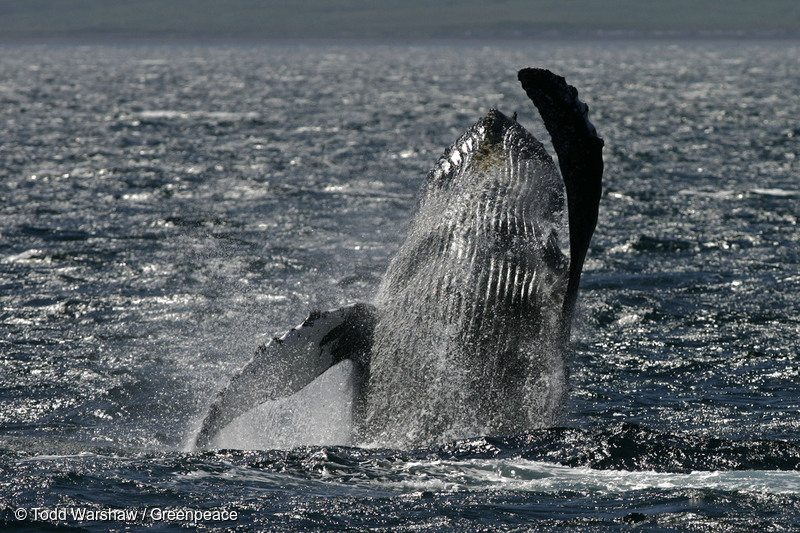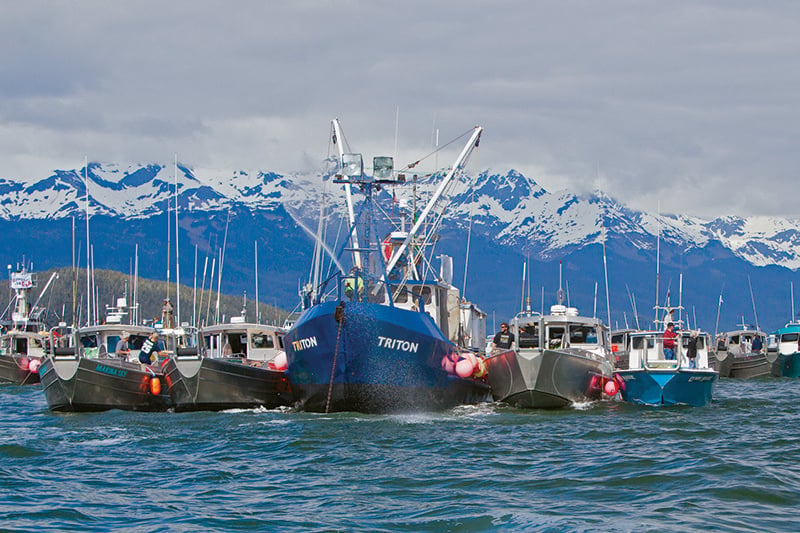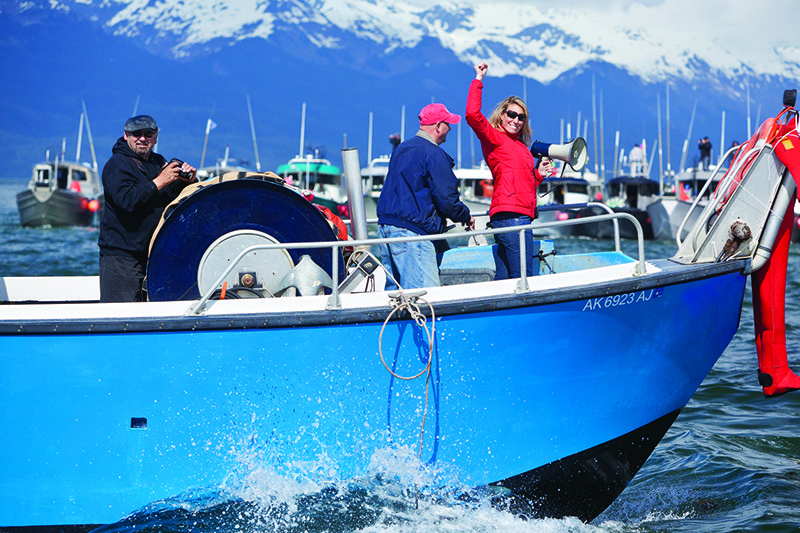My name is Emily Stolarcyk. I live and work in Cordova, Alaska, a small off-road fishing village on the south central coast. Like many towns in Alaska, you have to take a boat or a plane to get here. There is no road to drive to other towns, which makes living here a lot like living on an island. There are no stop lights, no strip malls and no fast food restaurants.
The people that live here are a special kind of people — people that work hard and live close to the land and sea. Nature is still untamed here; venture just past Main Street and you find yourself in a wilderness more wild than most people could even dream of.
For us, protecting this wilderness is about more than just protecting the natural world. It’s about our livelihoods and the traditions many of us have practiced for generations.
Unfortunately, the U.S. Navy doesn’t see it the same way.
For decades, the Navy has conducted live-fire trainings — rocking the Gulf of Alaska with explosive blasts — without regard for the impact on marine life and my community. Recently, they shifted these trainings so they’re threatening whales, birds, and other wildlife as they migrate north. And right now, they’re asking for permission to keep doing the same thing for the next five years.
I need your help to take this on. Ask the Navy to make small changes that can have a big impact for Alaskan wildlife and communities. We ask that the Navy move their trainings farther offshore and to the fall.
I first learned about these live-fire “war games” in September 2014, when Navy representatives came to my community to tell us about their plans in the Gulf of Alaska. According to the Navy’s Environmental Impact Statement (EIS), their trainings use mid-frequency sonar for submarine exercises, plus a variety of real weapons and explosives — bombs, heavy deck guns, torpedoes, missiles, and carrier strikes — in the pursuit of “military readiness.”
I remember walking around the room at that first public meeting, looking at the flashy posters, complex charts, and glossy pictures of jets and submarines. That’s when it dawned on me what they were doing. I turned to them in utter disbelief and said, “you’re bombing fish, you’re bombing our food.”
I was shocked. I sat down, listened to their presentation, asked my questions, and then went home. The next day, we started to organize.
Taking this on came down to knowing that the health of my community depends on the health of the habitat around us. The Navy doing whatever it wants when communities like mine say no lit a fire in me.
And there is so much about peace-time war practice that seems wrong to me. The Navy’s justification for these trainings is “military readiness,” but what they mean is that in order to drop bombs in other countries, you have to drop some at home first.
This is what they call “certifying troops.”
The Navy doesn’t even maintain a presence in Alaska. When they drop bombs off our coast, it means that people that don’t live here to come and pollute our habitat and leave. And it isn’t just Alaska, the Navy does this everywhere: Hawaii, Southern California, the Pacific Northwest, the Atlantic, and the Mariana Islands. It’s all the same — blast with sonar and explosives, certify, repeat.
This is not what I want from a military that’s supposed to defend my freedoms.
If anything, the Navy should be protecting our oceans from harm, not harming them and telling me it’s for my own protection.

Humpback whales like the one pictured here are one of nine endangered species threatened by U.S. Navy training in the Gulf of Alaska. The others are blue whales, fin whales, sei whales, sperm whales, gray whales (Western North Pacific stock), North Pacific right whales, Steller sea lions (Western U.S. stock), and sea otters.
This practice also comes with a long list of potentially devastating effects for fish and marine mammals. But as the Navy states in its EIS, no studies have established the short or long-term effects of cumulative exposure of fish and marine mammals to any type of sound, including sonar blasts. Even though we don’t know enough about the potential consequences of these trainings, the Navy is exempted from the standard requirement to do environmental monitoring.
Of the many species potentially impacted by these trainings, nine are endangered, seven of which are whale species. If authorized, the Navy is predicting up to 182,610 marine mammal “takes” (deaths, injuries, or the disruption of essential life behaviors) over the next five years in the Gulf of Alaska.
The Gulf of Alaska supports the most sustainable and economically valuable fisheries left in the United States. Fishing is the largest private sector employer in Alaska, providing over 63,000 jobs as well as a healthy food source. In addition to being our main food source, more than 90 percent of people in my community rely on sustainable fishing for an income.

May 16, 2015 – Cordova, Alaska: More than 170 commercial fishing boats turn out in a peaceful protest to oppose the Navy’s ‘Northern Edge’ training exercises in the Gulf of Alaska. Photo by Bob Martinson / All Rights Reserved.
Since that moment nearly two years ago, our community has been working to get the Navy to make small changes that can have a big impact. No one is asking the Navy not to train. We’re asking them to move further offshore and to a different time of year, when most whales, fish, and birds have migrated south.
I understand that military preparedness drills are important for national safety. But this is my home, and right now these drills are threatening my safety. This is where my food comes from and where my community works — we depend on healthy oceans for everything. These war games are a threat to our regional economy, our traditional subsistence cultures, the whales in our waters, our fish and wildlife resources. They’re a threat to people like me.
Emily Stolarcyk is the Program Manager for the Eyak Preservation Council, a nonprofit organization working to address environmental and social justice issues in the Prince William Sound and Copper River region of Alaska. The views expressed here are her own.



